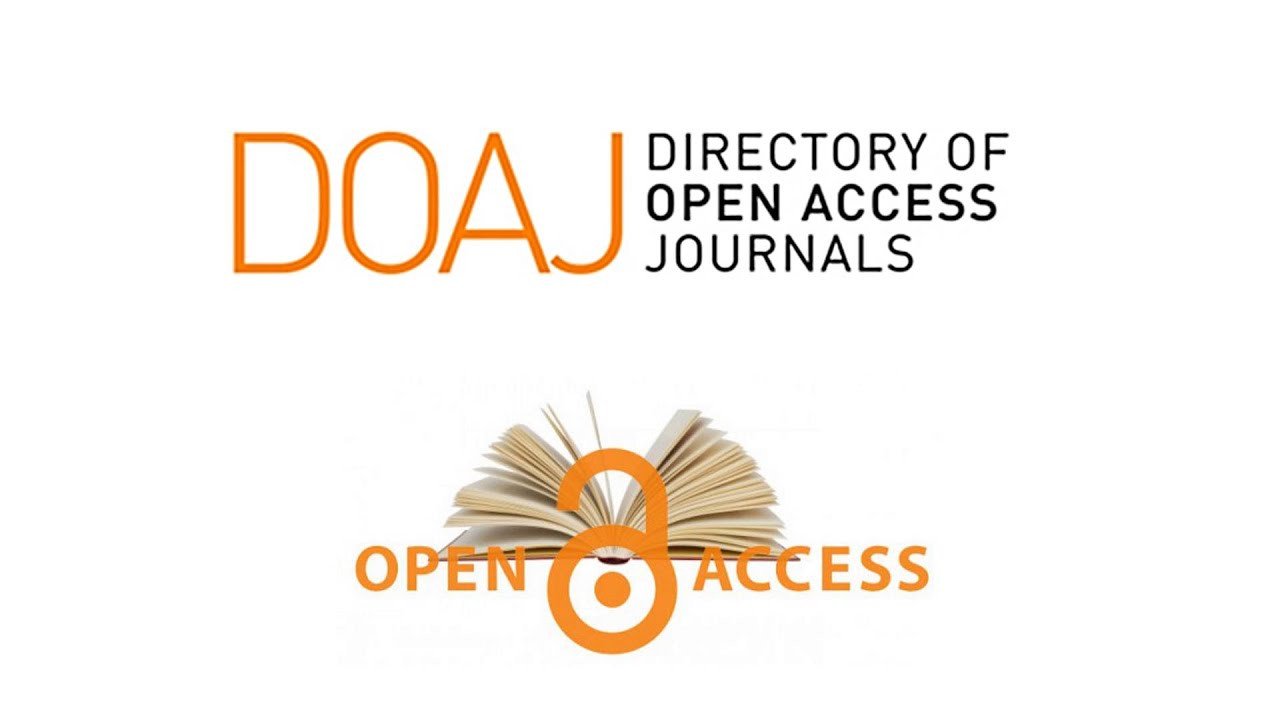A Comparative Study on Water Quality Assessment of Shatt Al-Arab Estuary and Al-Ashar Canal, Basrah, Iraq
DOI:
https://doi.org/10.58629/ijaq.v20i2.484Keywords:
Al-Ashar canal, chemical, biological parameters, physical parameters, Shatt Al-Arab, water qualityAbstract
Monitoring water quality is absolutely essential for formulating policies that affect public and environmental health. The study samples were collected during the period from autumn 2021 to summer 2022, The study show the environmental deterioration of Al-Ashar canal compared with Shatt Al-Arab estuary. including some physical parameters: air and water temperature, which had the highest values in station 2 during July and reached 38.9 and 29 C°, respectively while salinity concentrations recorded a high at station 1. achieved (8.8) g/L. Turbidity and total suspended matter concentrations increased at station 3, achieving 106 NTU and 100 mg/L, respectively. Also the chemical and biological parameters in Al-Ashar Canal were very poor compared to the Shatt Al-Arab, including: pH, whose values were in the basal direction, and the highest values were recorded in station 3, achieving 8.89 Also, there was an increase in the values of the biological oxygen demand and chemical oxygen demand, achieving 2400 and 590 mg/L at stations 2 and 3 respectively. While a decrease was recorded in the dissolved oxygen values in station 3, which amounted to 0.13 mg /L, nutrients ( , and ) increased at station 3,2,2. achieving 1.79, 17.982 and 15.51 µg/L, respectively. Also, the values of chlorophyll A increased at station 2 and reached 215.72 µg/L. The aimed of the study is determined the water quality of Al-Ashar canal and compared with Shatt Al-Arab.Metrics
References
Abdullah, A.A.M.; Al-Saboonchi, A.A. and Hassan, M.K. (2009). Physical and chemical properties of water in the middle part of Shatt Al-Arab river. The 6 scientific conferences of fisheries resources Water quality and pollution (SCFRSWQP6), :1-17.
Adlan, N.H. and Al-Abbawy, D.A. (2022). Changes in Physicochemical Characteristics of Water along Shatt Al-Arab River. Indian J. Ecol., (18): 300-307.URL
Al-Asadi, S.A.; Al- Hawash, A.B.; Alkhlifa, N.H.A. and Ghalib, H.B. (2019). Factors affecting the levels of toxic metals in the Shatt Al-Arab River, Southern Iraq. Earth Syst. Environ., 3(2): 313-325. https://doi.org/10.1007/s41748-019-00096-y
Al-Asadi, S.A.; Al-Qurnawi, W.S.; Al Hawash, A.B.; Ghalib, H.B. and Al-Khalifa, N.H.A. (2020). Water quality and impacting factors on heavy metals levels in Shatt Al-Arab River, Basrah, Iraq. Appl.WaterSci.,10(5):1-15. https://doi.org/10.1007/s13201-020-01196-1
Al-Atbee, R.S.K. (2018). Assessment of Some Heavy Elements and Hydrocarbons in the Water, Sediments and Dominant Aquatic Plants at Al-Chibayish marshes. M. Sc. Thesis, Coll. Sci. Univ. Basrah: 208pp.
Al-Aumary, D.A. (2015). The Use of Water Quality Index (Canadian. Model).in Evaluation of Water Quality of Main out full drain and
Euphrates river to feed AL-Hammar Marsh. M. Sc. Thesis, Coll. Sci. Univ. Thi-Qar: 126pp. (In Arabic).
Al-Edani, T.Y.; Al-Tameemi, H.J. and Jasim, Z.F. (2019). Phytore-mediation of heavy metals (Cd, Cu, Fe and Pb) by using aquatic plants in Shatt Al-Arab River. Eng. Technol. J., 37(3): 365-369. http://dx.doi.org/10.30684/etj.37.3C.10
Al-Hello, A.A.N. and Al-Obeidi, A.M.J. (1997). Water chemistry Shatt al-Arab from Qurna to Fao. Mesopot. J. Mar. Sci., 12 (1): 189-203. (In Arabic).
Al-Hijaj, M.H.; Talal, A.A.; Hantoush, A.A. and Basrah, B.I. (2019). Polycyclic Aromatic Hydrocarbons (PAHs) in Waters from Northern Part of Shatt Al-Arab River, Iraq Marsh Bull., 14(1): 11-21. https://www.iasj.net/iasj/download/da-647e86d2128c2b
Ali, M.H; Al-Muzaffar, N.A.A.; Yeser, A.A.T.; Rahma, S.A.; Ahmad, A.R; Mohammed, H.H. and Khedr, W.M. (2021). Salt water intrusion in Shatt Al-Arab Estuary A Barrage Construction and its EIA. Dar Al Kutub for printing and publishing, Univ. Basrah. Iraq, 228 pp. URL
Al-Khafaji, K.K; Karim, R.M. and Al-Baghdadi, N.M. (2021). Study of Aquatic Gastropods (Mollusca) in Shatt Al-Arab River, Iraq. Egypt. J. Aquat. Biol. Fish., 25(3): 137-146. https://journals.-ekb.eg/article_172861.html
Al-Saad, H.T.; Alhello, A.A.; Al-Kazaeh, D.K.; Al-Hello, M.A.; Hassan, W.F. Mahdi, S. (2015). Analysis of water quality using physico-chemical parameters in the Shatt Al-Arab Estuary, Iraq. Int. J. Mar. Sci., 5(49): 1-9. https://doi.org/10.5376/ijms.2015.05.00-49.
Al-Saadi, H.A. and Antoine, S.E. (1981). Primary productivity and phytoplankton population dynamics in polluted Ashar canal and Shatt Al-Arab river, Basrah (Iraq). Verh. Int. Ver. Limno., 21(2): 880-885. URL.
Al-Shawi, E.J.; Al-Rubaie, A.A. and Abdullah, S.B. (2007). The southern part of the Tigris and Euphrates rivers and their impact on the physical and chemical properties to the mouth of the Shatt Al-Arab. J. Arab., 11 (6): 125-137. (In Arabic)
Al-Shawi, E.J.; Al-Rubaie, A.A. and Rasan, A.K. (2005). Levels Nutrients in water and sediment organic carbon content as an indicator of organic pollution in the Shatt Al-Arab River. Basrah J. Agric. Sci., 18 (2): 97-98. (In Arabic)
Al-Shmery, A.Y.H (2013). Estimation of some heavy metals in clams, sediments and water from Shatt Al-Arab and treatment rocks porcellanite. M. Sc. Thesis, Coll. Educ., Univ. Basrah: 100pp. (In Arabic).
Al-Sowaig, A.R.A. (1999). Study of the comparative ideology of the Shatt Al-Arab River and Al-Khawra Canal, Basrah, Iraq. M. Sc. Thesis, Coll. Agric, Univ. Basrah: 61 pp. (In Arabic).
Al-Tamimi, M.M.H. (2016). Evaluation of the validity of Al-Gharraf River water in southern Iraq for different uses using the water quality index (Canadian model). M. Sc. Thesis, Coll. Educ., Univ. Dhi Qar: 127 pp. (In Arabic).
Al-waeli, A.A.A. (2021). Ecological and Taxonomical Study of the Phytoplankton (Non- Diatoms) in the waters o of the Shatt Al-Arab. M. Sc. Thesis, Coll. Educ. Pure Sci, Univ. Basrah: 196pp. (In Arabic).
Amer, A.M.; AL-Khafaji, A.H.; Kadhim, K.F. and Haseeb, M. (2022). Polycyclic Aromatic Hydrocarbon Content in Water and Sediments in the Middle Part of shatt AL-Arab River-Southern Iraq. J. Appl. Chem. Sci. Int., 13(3): 35-40. URL.
Antoin, S.E. and Al-Saadi, H.A. (1982). Limnological studies on the polluted Ashar canal and Shatt Al-Arab river at Basrah, Iraq. Int. Rev. Ges. Hydrobiol., 67(3): 405-418. URL.
APHA, American Public Health Association (2005). Standard Methods for the Examination of Water and Wastewater. 21st Ed. Washington, 22621pp. URL.
APHA, American Public Health Association (2012). Standard Method for the Examination of Water and Wastewater. 22 Ed. Washington, 2130pp. URL.
Ati, R.S. (1999). An ecological study to muhejran canal, one of the main tributaries to Shatt Al-Arab river, Basrah-Iraq. M. Sc. Thesis, Coll. Agric, Univ. Basrah:61pp. (In Arabic).
Fahd, K.K. (2005). A study of the seasonal changes of some nutrients and other related indicators of the general estuary river in southern Iraq. J. Adv. Agric. Technol. 18 (3): 114-122pp. (In Arabic). https://www.iasj.net/iasj/article/41926
Gatea, M.H. (2018). Study of water quality changes of Shatt Al-Arab River, South Iraq. J. Univ. Babylon Eng. Sci., 26 (8): 228-241. https://www.iasj.net/iasj/download/c93011cea9ce65ff
Gdemi, H.D. and Awad, E.Y. (2022). The effect of some environmental factors on the production of hepatotoxins (Microcystin) in the Shatt Al-Arab waters in Basrah Governorate southern Iraq. Eurasian Res. Bulletin., 14: 103-117. URL.
Guan, W.Y. (2011). Sustainability Water Quality in UTM river. B.S. Thesis in Faculty of Civil Eng, Univ. Tech, Malaysia: 114pp.
Hamdan, A.; Dawood, A. and Naeem, D. (2018). Assessment study of water quality index (WQI) for Shatt Al-Arab River and its branches, Iraq. Matec Web Conf., 162: 1-7. URL.
Hamza, A.Z. (2023). Impact of sub-rivers feeding the Shatt Al-Arab River on its water quality. Water. Environ. Sustainability., 3(3): 59-64. https://doi.org/10.52293/WES.3.3.5964.
Hussein, N.A.; Al-Saboonich A.; Al-Saad H.T; Karem H. and Hamid I. (1991). Shatt Al-Arab scientific study. Univ. Basrah. Mar. Sci., Publication: 391 pp. (In Arabic)
Iraqi Rivers Maintenance Regulation No. 25 of 1967 and amendments thereto of 1988. The Ministry of Health. Directorate of protecting and improving the environment - environmental legislation. URL
Khalaf, R.Z.; Hussien, N.A. and Al-Hejuje, M.M. (2023). Comparing Study Between Water Parameters of the Tide and Ebb Phase in Shatt Al-Arab River. The 5th International IOP Conference Series Earth and Environmental Science (IICSEES5),1-9. URL.
Khalaf, W.F. (2013). Ecological and taxonomic study of the phytoplankton community in the waters of the southern part of
the general estuary, Thi-Qar Governorate, Iraq. M. Sc. Thesis, Coll. Sci., Univ. Dhi Qar: 118 pp. (In Arabic).
Mohammad, A.J.; Alyousif, N.A.; Al-Mosawi, U.A.S. and Al-Hejuje, M.M. (2021). Assessment of water quality supplies in some areas
of Basrah Governorate, Iraq. Ecol. Environ. Conserv., 27 (1): 04-409. URL.
Moyel, M.S. (2010). Assessment of water quality of the northern part of Shatt Al-Arab river, using water quality index (Canadian version). M. Sc. Thesis, Coll. Sci, Univ. Basrah: 100pp. (In Arabic)
Parsons, T.S.; Maita, Y. and Lalli, G.M. (1984). A manual of chemical and biological methods for seawater analysis. Pergamon Press. New York.,188 pp.
Qzar, I.A.; Al-Hejuje, M.M.; Talib, A. and Rajab, A.M. (2021). The effect of Qarmmat Ali channel on the water quality of Shatt Al-Arab river. Marsh Bulle., 16(2): 106-112. URL.
Resen, A.K. (2001). Comparative study of ecological characteristics and levels of Organic pollution in three Main Canals of the Shatt AL-Arab river, Southern Iraq. M. Sc. Thesis, Coll. Agri, Univ. Basrah :58pp. (In Arabic).
Saki, S.H. (2022). Water Quality Evaluation for The Southern Al-Hawizah Marsh Using Ecological and Diatom Water Quality Indices. M. Sc. Thesis, Coll. Sci, Univ. Basrah: 152 pp. (In Arabic).
Saleem, F.M. (2013). Using organic pollution Index (OPI)to quantitative and qualitative assessment of Shatt AL-Arab River. M. Sc. Thesis, Coll. Sci, Univ. Basrah: 97 pp. (In Arabic).
Sarker, A.L.; Al-Nasiri, S.K. and Hussein, S.A. (1980). Diurnal fluctuations in the physico-chemical conditions of the Shatt Al-Arab and the Al-Ashar Canal. Proc. Anim. Sci., 89(2): 171-181. https://link.springer.com/article/10.1007/BF03179158
Varol, M.E.T.; Gökot, B.; Bekleyen, A.; and Şen, B. (2012). Water quality assessment and apportionment of pollution sources of Tigris River (Turkey) using multivariate statistical techniques—a case study. River Res. Appl., 28(9): 1428-1438. URL.
Vollenweider, R.A. (1974). A manual on methods for measuring primary production in aquatic environments. Int. Biol. Program
Hand book 12. Blackwell Scientific Publication Ltd. Oxford 225 pp. URL.
Wilson, K. and Foley, A. (2003). Water quality of rivers in the Jordan catchment. Areport forming part of the requirements for state of rivers reporting. Part2 (DPIWE). Tasmania: 8-29. URL.
Wood, E.D.; Armstrong, F.A.J. and Richards, F.A. (1967). Determination of nitrate in sea water by cadmium-copper reduction to nitrite. J. Mar. Biol. Ass. U.K., 47:23-31pp. URL
World Health Organization (2004). Guidelines for Drinking Water Quality. 3rd Edi-tion, Geneva. URL
Downloads
Published
How to Cite
Issue
Section
License
Copyright (c) 2023 Iraqi Journal of Aquaculture

This work is licensed under a Creative Commons Attribution 4.0 International License.










